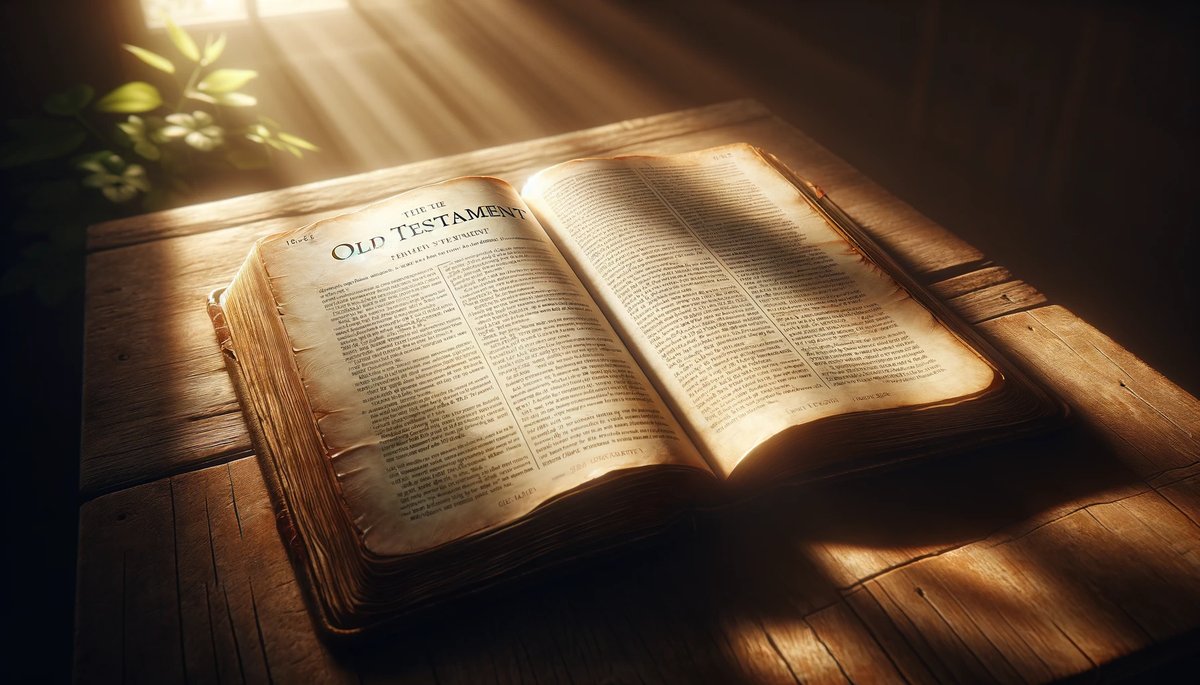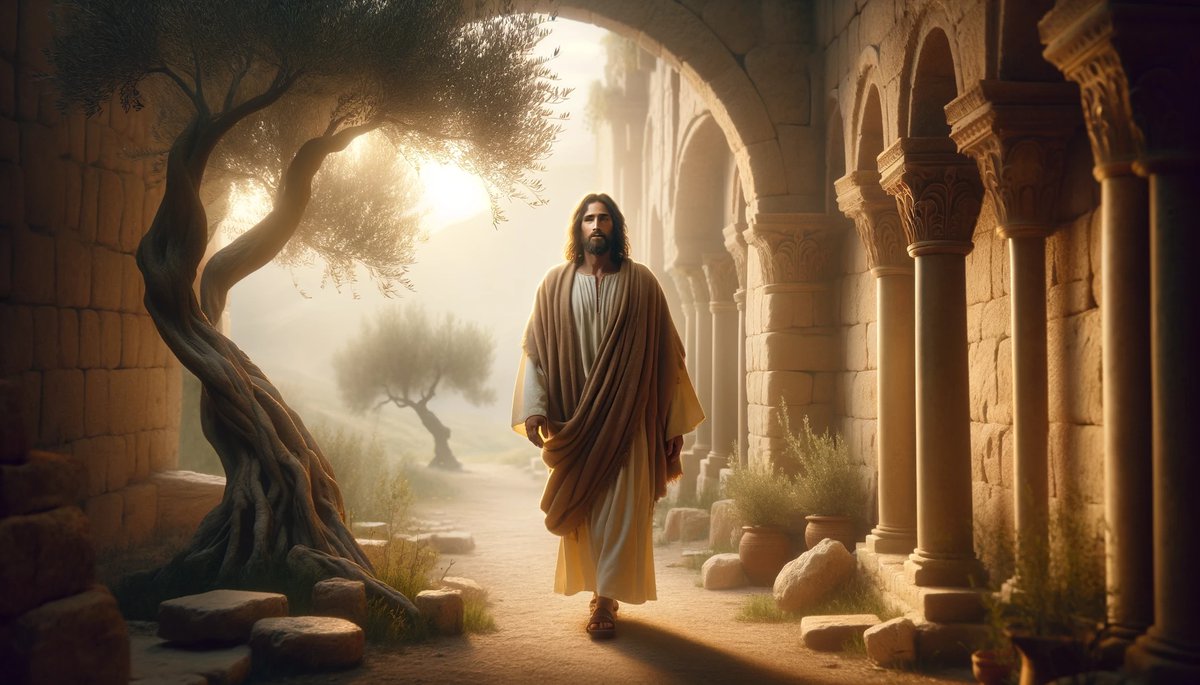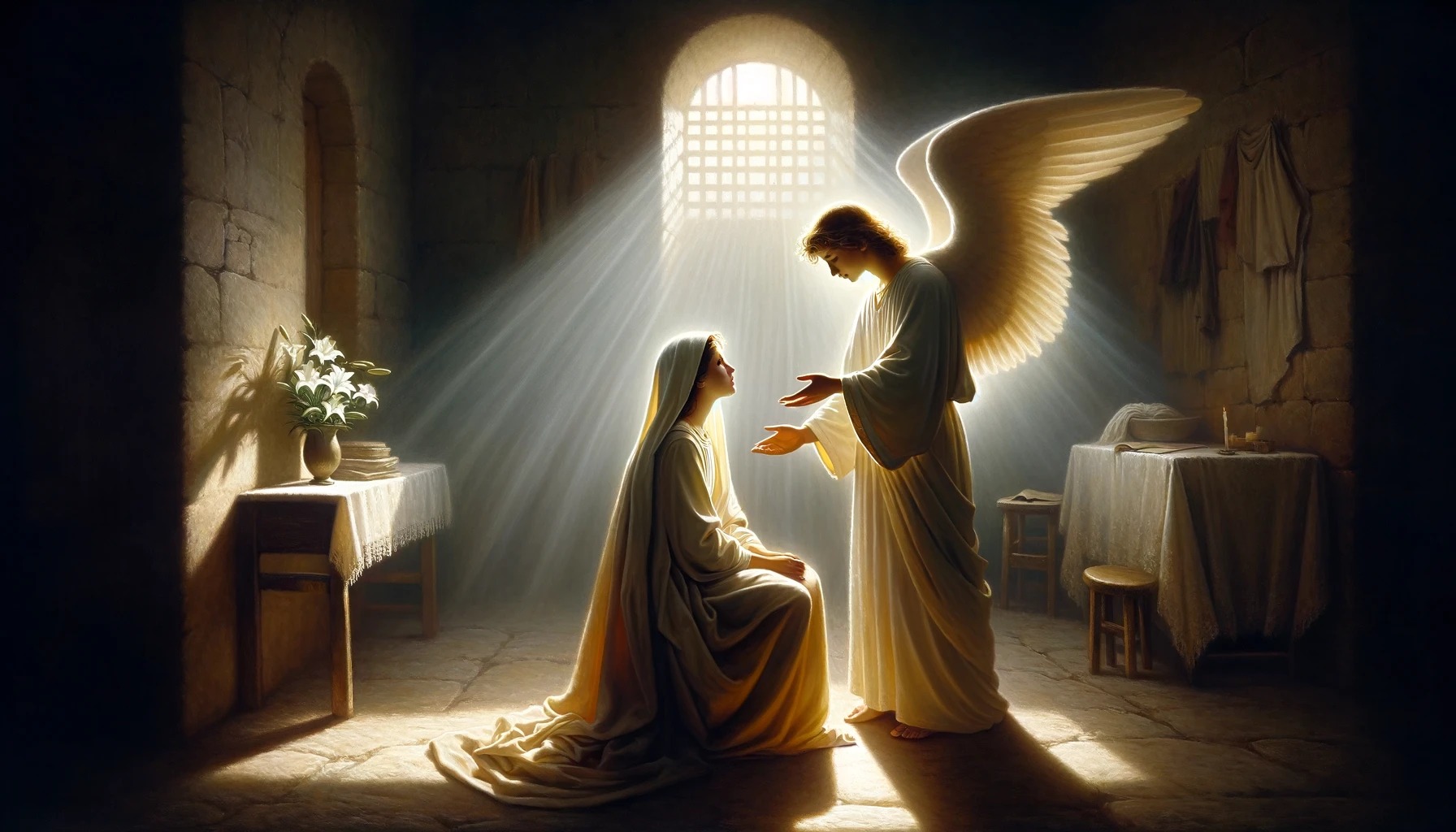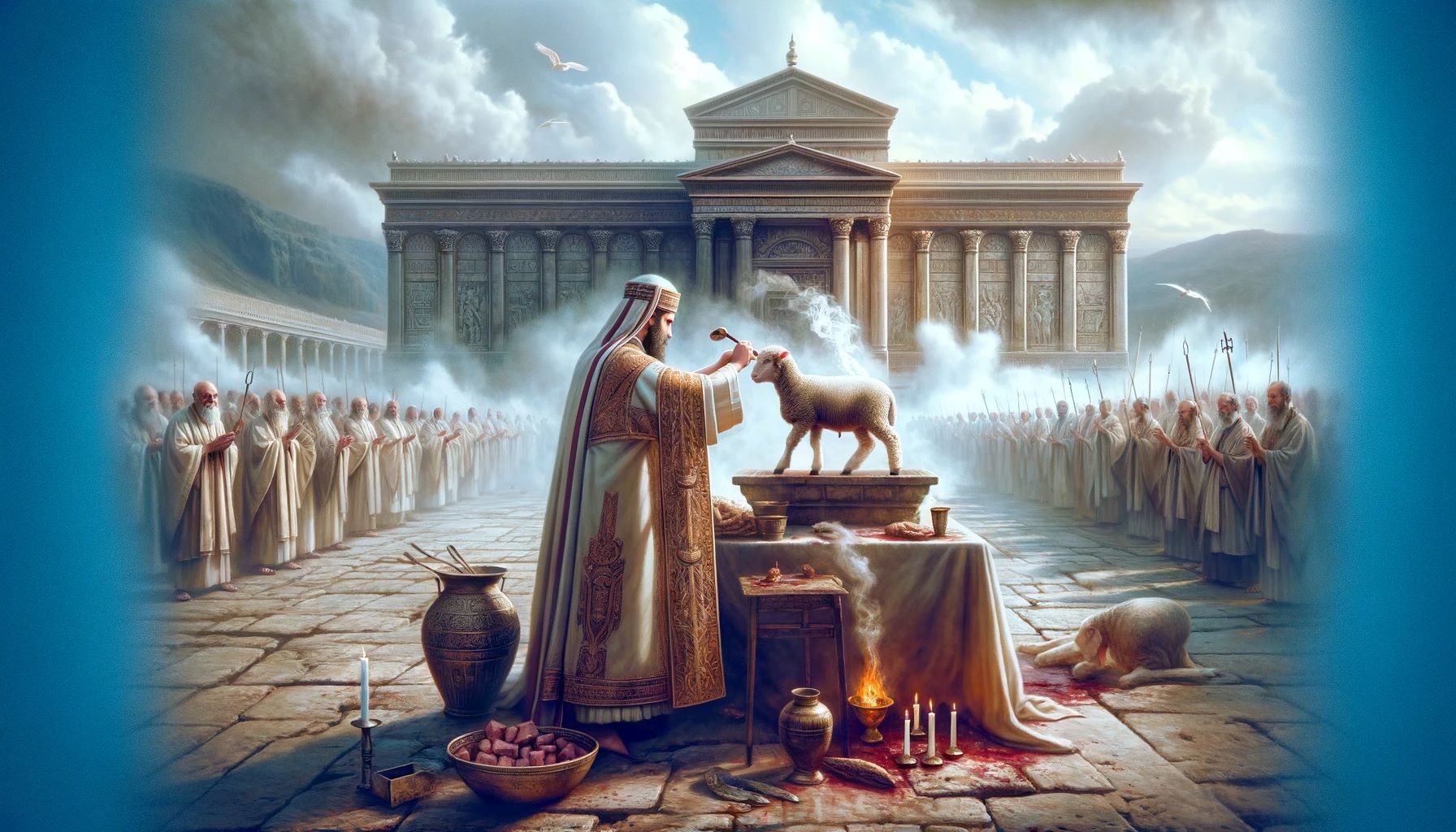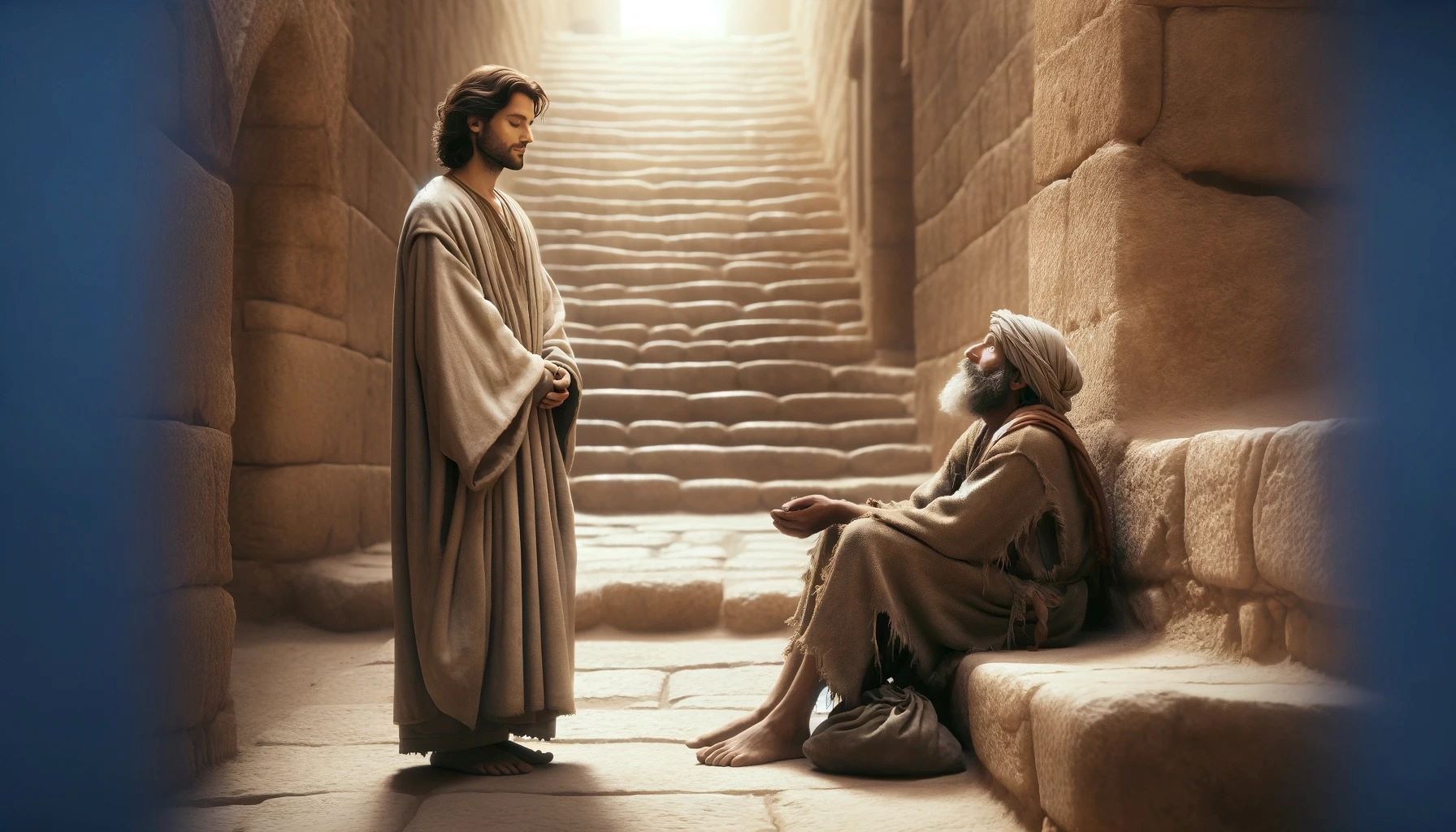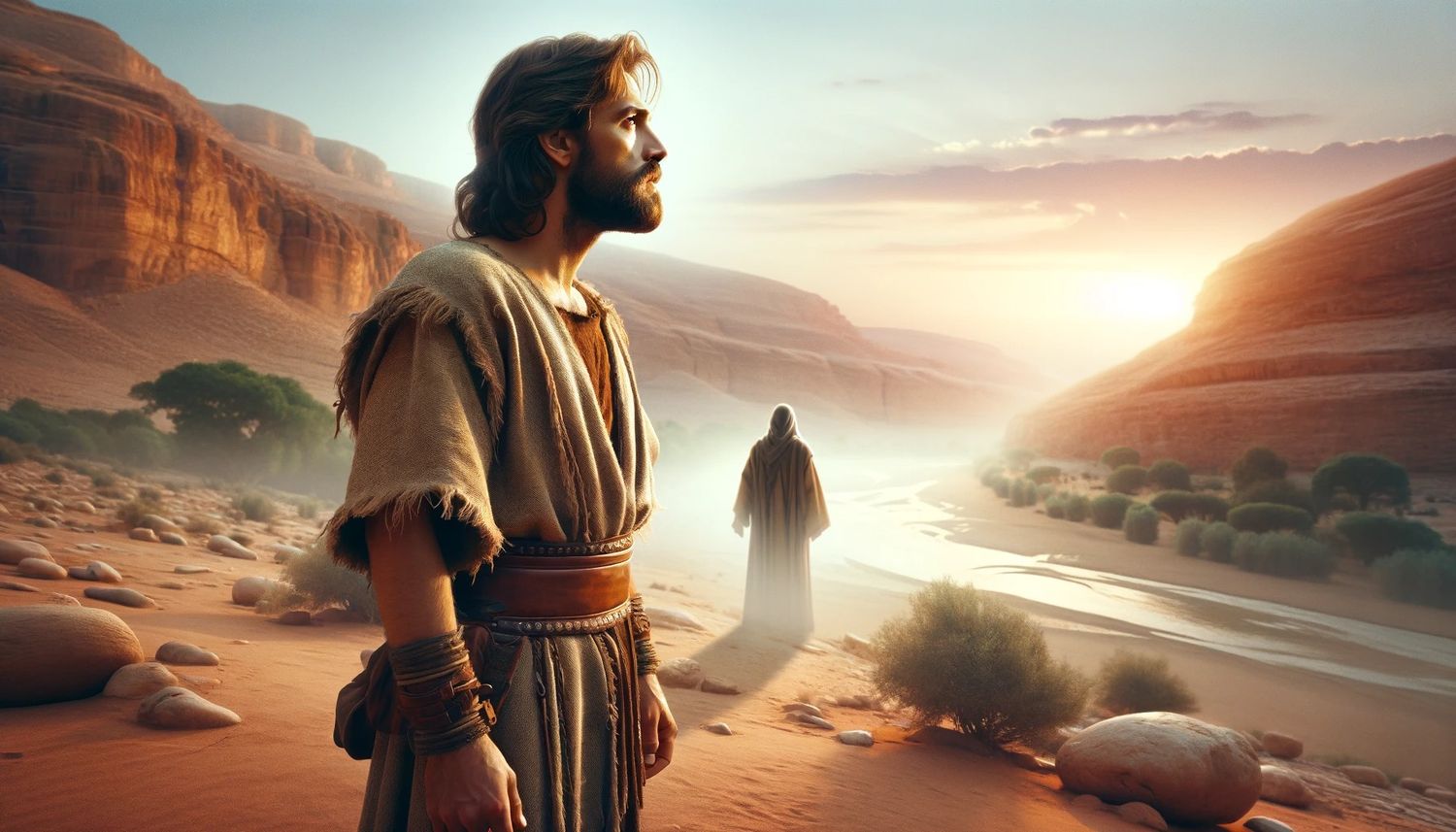Home>Christian Videos>Bible Stories>How Does The Old Testament Testify Of Jesus Christ
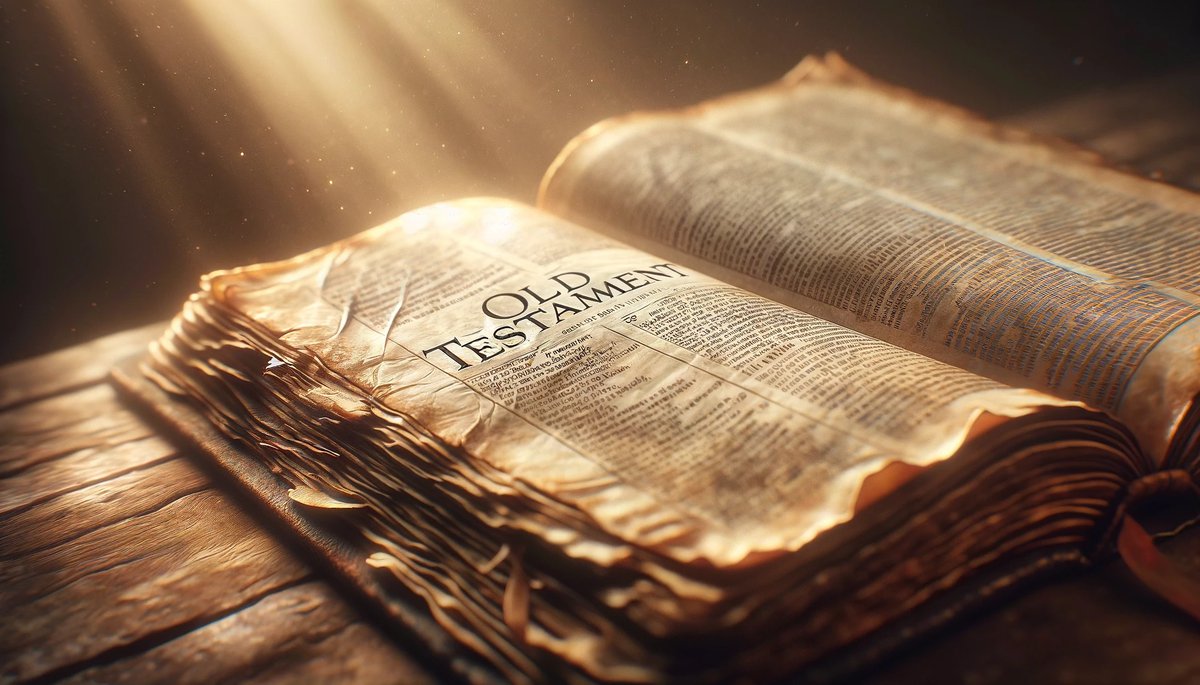

Bible Stories
How Does The Old Testament Testify Of Jesus Christ
Published: February 29, 2024
Peter Smith, Editorial Director at Christian.net, combines deep insights into faith, politics, and culture to lead content creation that resonates widely. Awarded for his contributions to religious discourse, he previously headed a major organization for religious communicators, enhancing dialogue on faith's societal impacts.
Discover how the Old Testament reveals the story of Jesus Christ through its powerful and timeless Bible stories. Explore the connection between the Old Testament and the life of Jesus.
(Many of the links in this article redirect to a specific reviewed product. Your purchase of these products through affiliate links helps to generate commission for Christian.net, at no extra cost. Learn more)
Table of Contents
Introduction
How does the Old Testament testify of Jesus Christ? The Old Testament, the first part of the Christian Bible, contains numerous prophecies, types, shadows, and messianic psalms that point to the coming of Jesus Christ. These scriptures provide a foundation for understanding the significance of Jesus in the context of the history and beliefs of the Israelites. In this article, we will explore the various ways in which the Old Testament anticipates and reveals the coming of Jesus Christ, shedding light on the profound connection between the Old and New Testaments.
Read more: Where Is Jesus Christ In The Old Testament
Prophecies of Jesus in the Old Testament
The Old Testament contains numerous prophecies that foretell the coming of Jesus Christ. These prophecies serve as a testament to the divine plan of salvation and the fulfillment of God's promises. One of the most well-known prophecies is found in the book of Isaiah, where the prophet Isaiah foretells the birth of Jesus, stating, "For to us a child is born, to us a son is given, and the government will be on his shoulders. And he will be called Wonderful Counselor, Mighty God, Everlasting Father, Prince of Peace" (Isaiah 9:6). This prophecy, written hundreds of years before the birth of Jesus, accurately describes the nature and significance of the Messiah. Additionally, the book of Micah prophesies the birthplace of Jesus, stating, "But you, Bethlehem Ephrathah, though you are small among the clans of Judah, out of you will come for me one who will be ruler over Israel, whose origins are from of old, from ancient times" (Micah 5:2). These prophecies, among others, serve as compelling evidence of Jesus' fulfillment of the Old Testament scriptures, reinforcing the belief in his divine identity and purpose.
-
The prophecy in Isaiah 53 vividly describes the suffering and sacrifice of Jesus, portraying him as the "suffering servant" who would bear the sins of humanity. This prophecy provides a profound insight into the redemptive mission of Jesus and his ultimate sacrifice for the salvation of mankind.
-
The book of Zechariah contains prophecies about the betrayal of Jesus for thirty pieces of silver, his crucifixion, and the piercing of his hands and feet, all of which find fulfillment in the life and death of Jesus Christ.
-
The Old Testament also prophesies the resurrection of Jesus, as seen in the Psalms and the book of Hosea, affirming the central tenet of the Christian faith that Jesus would conquer death and rise again.
These prophecies not only validate the identity of Jesus as the long-awaited Messiah but also demonstrate the intricate design of God's plan throughout history, affirming the continuity and coherence of the biblical narrative. The fulfillment of these prophecies in the life, death, and resurrection of Jesus Christ serves as a powerful testament to his divine role in the redemption and reconciliation of humanity.
Types and Shadows of Jesus in the Old Testament
The Old Testament is replete with types and shadows that prefigure the coming of Jesus Christ. These symbolic representations, often found in the lives of significant figures, events, and rituals, serve as foreshadowing elements that point to the redemptive work of Jesus. Understanding these types and shadows provides profound insights into the interconnectedness of the Old Testament with the person and mission of Jesus Christ.
-
Adam as a Type of Christ: The narrative of Adam in the book of Genesis serves as a type of Christ, representing the first man and the federal head of humanity. The apostle Paul draws a parallel between Adam and Jesus, describing Jesus as the "last Adam" who brings redemption and life to humanity (1 Corinthians 15:45). The disobedience of Adam contrasts with the obedience of Jesus, highlighting the redemptive significance of Christ's work in undoing the effects of Adam's fall.
-
The Passover Lamb: The institution of the Passover in the book of Exodus, where the Israelites were commanded to sacrifice a lamb and mark their doorposts with its blood, serves as a powerful foreshadowing of Jesus as the sacrificial Lamb of God. The New Testament identifies Jesus as the ultimate Passover Lamb whose blood brings deliverance from sin and death, fulfilling the typology of the Old Testament Passover (1 Corinthians 5:7).
-
The High Priest and Atonement: The role of the high priest in the Old Testament, particularly on the Day of Atonement, foreshadows the priestly ministry of Jesus Christ. The high priest's intercessory work and the sacrificial system point to Jesus as the ultimate High Priest who offers himself as the perfect atoning sacrifice for the sins of humanity, bridging the gap between God and humanity (Hebrews 4:14-16).
-
Joseph as a Type of Christ: The life of Joseph in the book of Genesis contains striking parallels to the life of Jesus. Joseph's experiences of rejection, betrayal, and eventual exaltation mirror the redemptive journey of Jesus, foreshadowing his role as the suffering servant and the exalted ruler. Joseph's forgiveness and reconciliation with his brothers also anticipate the redemptive work of Jesus in reconciling humanity to God.
-
The Tabernacle and Temple: The construction and rituals associated with the tabernacle and later the temple serve as types and shadows of the person and work of Jesus Christ. The tabernacle, with its sacrificial system and the presence of God among the people, points to Jesus as the ultimate dwelling place of God among humanity (John 1:14). The temple imagery is also applied to Jesus, signifying his body as the true temple that would be destroyed and raised up in three days (John 2:19-21).
Understanding these types and shadows not only enriches the interpretation of the Old Testament but also illuminates the profound unity and coherence of the biblical narrative. The Old Testament, through its types and shadows, provides a rich tapestry of anticipatory elements that find their fulfillment in the person and work of Jesus Christ, reinforcing the timeless relevance and significance of the Old Testament in the Christian faith.
Messianic Psalms and Prophetic Passages
The Psalms, a collection of poetic and prophetic writings, contain numerous messianic psalms that anticipate the coming of Jesus Christ. These psalms, attributed to King David and other authors, provide profound insights into the nature, mission, and significance of the Messiah. They serve as prophetic passages that find their fulfillment in the life, ministry, and redemptive work of Jesus Christ.
-
Psalm 22: This psalm vividly portrays the suffering and crucifixion of Jesus, with striking details that align with the events of his death. The opening words, "My God, my God, why have you forsaken me?" (Psalm 22:1), are echoed in the Gospels as the words spoken by Jesus on the cross. The psalm describes the piercing of hands and feet, the casting of lots for clothing, and the taunts of the onlookers, all of which find fulfillment in the crucifixion of Jesus. Despite the anguish and suffering depicted in the psalm, it ultimately points to the triumph of God's redemptive plan through the sacrifice of the Messiah.
-
Psalm 110: This psalm presents a prophetic declaration of the exaltation and reign of the Messiah. The opening verse, "The Lord says to my Lord: 'Sit at my right hand until I make your enemies a footstool for your feet'" (Psalm 110:1), is quoted in the New Testament multiple times, affirming its messianic significance. The psalm portrays the Messiah as a priest-king after the order of Melchizedek, signifying his eternal priesthood and sovereign rule. This psalm underscores the authority and majesty of the Messiah, pointing to Jesus as the ultimate fulfillment of the prophetic declaration.
-
Psalm 2: This psalm presents a powerful portrayal of the kingship and authority of the Messiah. The psalm begins with the question, "Why do the nations conspire and the peoples plot in vain? The kings of the earth rise up and the rulers band together against the Lord and against his anointed" (Psalm 2:1-2). The psalm emphasizes the futility of opposing the reign of the Messiah and calls for the nations to serve the Lord with fear and rejoice with trembling. The imagery of the Messiah's rule and the universal scope of his authority find fulfillment in the person of Jesus Christ, who is proclaimed as the King of kings and Lord of lords.
-
Isaiah 53: Although not a psalm, the prophetic passage in Isaiah 53 deserves mention for its profound portrayal of the suffering and atoning work of the Messiah. This passage, often referred to as the "Suffering Servant" passage, depicts the Messiah as one who would bear the sins of humanity and bring about redemption through his sacrificial suffering. The vivid imagery of the suffering servant, despised and rejected by men, pierced for our transgressions, and led like a lamb to the slaughter, finds its ultimate fulfillment in the life, death, and resurrection of Jesus Christ.
These messianic psalms and prophetic passages not only provide a glimpse into the redemptive mission of the Messiah but also affirm the continuity and coherence of the Old Testament in pointing to the person and work of Jesus Christ. They serve as compelling testimonies to the divine orchestration of God's plan throughout history, culminating in the revelation of Jesus as the long-awaited Messiah and Savior of the world.
The Law and Jesus in the Old Testament
The Old Testament law, often referred to as the Mosaic Law or the Law of Moses, holds a central place in the religious and cultural identity of the Israelites. This body of laws, commandments, and regulations, as outlined in the books of Exodus, Leviticus, Numbers, and Deuteronomy, served as the covenantal framework for the Israelites' relationship with God. However, the significance of the Old Testament law extends beyond its historical and legal dimensions, as it also foreshadows and anticipates the coming of Jesus Christ.
-
Fulfillment of the Law: Jesus himself affirmed the enduring relevance of the Old Testament law, stating, "Do not think that I have come to abolish the Law or the Prophets; I have not come to abolish them but to fulfill them" (Matthew 5:17). In this declaration, Jesus emphasizes the continuity and fulfillment of the law through his person and redemptive work. He embodies the perfect fulfillment of the law's righteous requirements, serving as the ultimate expression of God's covenantal faithfulness and justice.
-
The Moral and Ethical Dimension: The Old Testament law encompasses moral, ethical, and ceremonial aspects that reflect the character and will of God. Jesus, in his teachings and actions, upholds and amplifies the moral imperatives embedded in the law, emphasizing love for God and neighbor as the foundational principles (Matthew 22:37-40). His ethical teachings, such as the Sermon on the Mount, provide a profound exposition of the underlying principles of the law, calling for internal righteousness and genuine obedience.
-
Redemptive Fulfillment: The sacrificial and atoning aspects of the Old Testament law find their ultimate fulfillment in the person and work of Jesus Christ. The sacrificial system, with its emphasis on blood atonement and the forgiveness of sins, points to Jesus as the ultimate and perfect sacrifice for the redemption of humanity. The book of Hebrews expounds on the redemptive significance of Jesus' atoning work, portraying him as the high priest who offers himself as the perfect and eternal sacrifice, thereby fulfilling the typological and symbolic dimensions of the Old Testament law.
-
The Law as a Schoolmaster: The apostle Paul, in his writings, describes the law as a "schoolmaster" that leads to Christ (Galatians 3:24). The law, with its demands and requirements, serves as a tutor that points to the need for a Savior and the inadequacy of human efforts to attain righteousness. Jesus, as the fulfillment of the law, liberates believers from the burden of legalistic observance and offers the grace-based righteousness that the law foreshadowed.
-
Transformation and Renewal: Jesus' redemptive mission extends to the transformation and renewal of the human heart, fulfilling the prophetic promise of a new covenant (Jeremiah 31:31-34). Through his life, death, and resurrection, Jesus inaugurates a new era of spiritual renewal and empowerment, fulfilling the prophetic anticipation of the law written on the hearts of believers. The indwelling presence of the Holy Spirit, made possible through Jesus' redemptive work, enables believers to fulfill the righteous requirements of the law in a manner that transcends legalistic adherence.
In summary, the Old Testament law, with its moral, ethical, and redemptive dimensions, finds its ultimate fulfillment and significance in the person and work of Jesus Christ. His life, teachings, atoning sacrifice, and transformative power embody the culmination of the law's anticipatory role, affirming the timeless relevance and redemptive purpose of the Old Testament in the Christian faith.
Conclusion
In conclusion, the Old Testament serves as a rich tapestry of prophecies, types, shadows, messianic psalms, and the law that collectively testify of the coming of Jesus Christ. The intricate web of anticipatory elements woven throughout the Old Testament finds its fulfillment in the person and redemptive work of Jesus, affirming the profound unity and coherence of the biblical narrative. The prophecies, types, and shadows provide compelling evidence of Jesus as the long-awaited Messiah, while the messianic psalms and prophetic passages offer profound insights into the nature and mission of the Savior. Furthermore, the moral, ethical, and redemptive dimensions of the Old Testament law find their ultimate expression and fulfillment in the person of Jesus Christ, who embodies the perfect fulfillment of God's covenantal faithfulness and justice. The Old Testament, with its timeless relevance and significance, continues to serve as a foundational testimony to the identity and redemptive mission of Jesus Christ, bridging the continuity between the Old and New Testaments and affirming the enduring faithfulness of God's plan of salvation.



